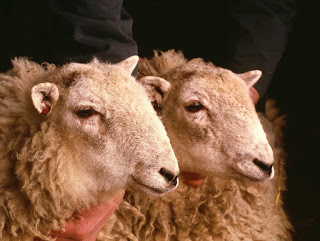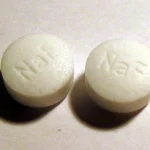
Cloning is a process in which a genetically identical copy of a biological organism such as a plant, an insect, a bacterium, an animal or, in theory, a human is made. Cloning has been occurring naturally on species of plants, fungi and bacteria for billions of years. Scientists learned how to make a genetic copy of biological material to produce genes, tissues, cells, and even a sheep named Dolly, the most famous cloned organism. Human cloning has been unsuccessful in some countries, despite attempts by scientists. Human cloning is an extremely sensitive issue based on ethics and the implications for the future of humans.
In 1979, researchers produced the first genetically identical mice by splitting mouse embryos in the test tube and then implanting the resulting embryos into the wombs of adult female mice.
Cloning may make it possible to save endangered species from becoming extinct.
Besides cattle and sheep, other mammals that have been cloned from somatic cells include: cat, deer, dog, horse, mule, ox, rabbit and rat. In addition, a rhesus monkey has been cloned by embryo splitting.
The first successfully clones animal was Dolly, a sheep that was born in 1996, in Edinburgh, Scotland, at the Roslin Institute under the guidance of Ian Wilmut and his colleagues. There were 277 attempts before Dolly was successfully cloned.
Despite several highly publicized claims, human cloning still appears to be fiction. There currently is no solid scientific evidence that anyone has cloned human embryos.
Plants such as strawberry plants have been cloning themselves for billions of years. Strawberry plants clone by shooting out a runner, which then grows its own root and begins to produce strawberries. Onions, potatoes, and even grass clones in a similar manner.
Clones do not always look identical. Although clones share the same genetic material, the environment also plays a big role in how an organism turns out.
People have been cloning plants since the beginning of agriculture. This is done by taking a clipping of a plant and growing it into a new plant.
Reproductive cloning may enable researchers to make copies of animals with the potential benefits for the fields of medicine and agriculture.
Tissue culture propagation is done by breaking up specialized roots and growing the root cells in a rich culture. The plants that grow are identical to the originals.
Although some experts think cloning can save many species that would otherwise disappear, others argue that cloning produces a population of genetically identical individuals that lack the genetic variability necessary for species survival.
Some creatures in the wild are able to clone, including some worms, frogs, lizards, and fish, under the right conditions. This type of cloning is referred to as parthenogenesis.
Therapeutic cloning involves creating a cloned embryo for the sole purpose of producing embryonic stem cells with the same DNA as the donor cell.
Identical twins are a type of natural occurring cloning process. The children are not clones of their parents but they are clones of each other.
Gene cloning is a carefully regulated technique that is largely accepted today and used routinely in many labs worldwide.
Cloned animals have shown to have health issues such as defects in the heart, liver, and brain, as well as increased birth size. They also age faster, and have immune system issues. Dolly the sheep only lived to be 6 years old when the normal life span of a sheep if 12 years.
In 1958, British biologist John Gurdon cloned frogs from the skin cells of adult frogs.
Embryonic stem cells can be used to generate healthy tissue in a laboratory, which may help to heal sick and dying people. These stem cells can be produced through embryonic cloning but there is a moral debate about its use as well as other concerns about its safety.
Several companies are currently providing services that use cloning technology. For example, South Korea-based Sooam Biotech clones pets for around $100,000.
Cloning might help sterile couples have genetic offspring. Cloning of humans however carries many issues in society and religion about human life and identity. It is an ongoing debate.
A Texas-based company, Viagen Pets, clones cats for $25,000 and dogs for $50,000.
Species that have been cloned include tadpoles, carp, mice, sheep, rhesus monkeys, pigs, guar, cattle, mules, horses, dogs, wolves, water buffalo, camels, and others.
Even plants are being cloned. One company is cloning maple trees to provide lumber for guitar-makers, with the aim of duplicating a quality in the wood, called figuring, that gives a guitar a sort of shimmering appearance.
There have been many movies made about the possibilities cloning may provide, such as Jurassic Park. Star Wars Clone Wars, The Island, and Resident Evil.
On July 30, 2003, a group of scientists led by Jose Folch at the Center of Food Technology and Research of Aragon, in northern Spain, brought back an extinct wild goat called a bucardo, or Pyrenean ibex.









